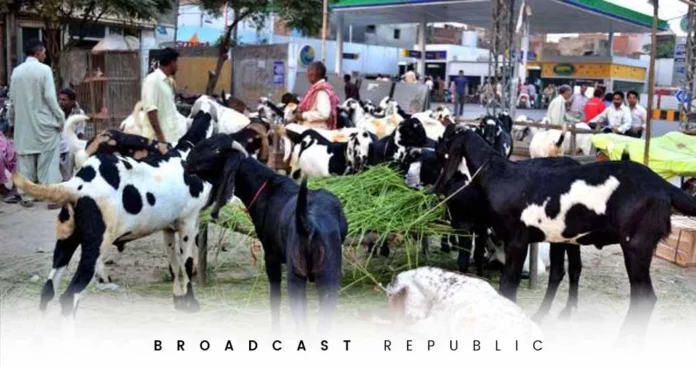Eid ul Azha, also known as the Festival of Sacrifice, stands as a testament to the unwavering faith and devotion of Muslims worldwide. This sacred occasion commemorates Prophet Ibrahim’s willingness to sacrifice his son as an act of obedience to Allah. Central to the celebration is the ritualistic sacrifice of animals, symbolizing the values of sacrifice, compassion, and devotion. In this comprehensive guide, we will explore the profound significance of maintaining hygiene practices during animal sacrifice on Eid ul Azha, providing essential guidelines to ensure cleanliness, safety, and well-being for all participants.
The act of sacrifice during Eid ul Adha symbolizes Prophet Ibrahim’s unwavering obedience to Allah and his willingness to sacrifice his son as an act of faith. As such, it is essential to approach this ritual with reverence and respect, which includes ensuring that hygiene practices are meticulously observed.
Understanding the Significance of Hygiene Practices:
Understanding the significance of hygiene practices during Eid ul Adha is essential for ensuring the safety and well-being of individuals participating in the sacred ritual of animal sacrifice. Hygiene practices play a crucial role in upholding the sanctity of the occasion and aligning with the teachings of Islam. Maintaining cleanliness not only promotes physical health but also reflects spiritual purity, as emphasized in Islamic teachings.
Creating a clean and well-maintained environment for the sacrificial ritual is equally important. Designating a specific area for the sacrifice, away from living spaces, and ensuring that it is clean, well-ventilated, and free from potential hazards contribute to maintaining hygiene standards. Properly disinfecting tools and instruments used for the sacrifice, such as knives and cutting boards, helps prevent the spread of bacteria or pathogens
The observance of Eid ul Azha is steeped in the teachings of Islam, emphasizing the importance of cleanliness in both a physical and spiritual sense. The act of sacrifice is not merely a ritualistic tradition but a profound expression of faith and reverence. As such, maintaining hygiene practices aligns with the fundamental principles of Islam and serves to enhance the sanctity of the occasion.
Furthermore, proper waste management is essential for maintaining cleanliness and preventing the spread of disease. Prompt disposal of animal waste in accordance with local regulations and guidelines, as well as thorough cleaning and disinfection of the sacrificial area post-sacrifice, are imperative hygiene practices.
Overall, understanding the significance of hygiene practices during Eid ul Adha underscores the importance of approaching the sacred ritual with reverence, respect, and a commitment to cleanliness. By upholding hygiene standards, participants honor the spirit of sacrifice and devotion while safeguarding their own health and well-being, as well as that of their community.
Hygiene Practices During Animal Sacrifice on Eid ul Azha
Here we have shared some guidelines to implement hygiene practices during animal sacrifice on Eid ul Azha:
Preparing the Environment:
Create a designated area for the sacrificial ritual, ensuring it is clean, well-ventilated, and away from living spaces. Clear the area of any potential hazards and provide a clean and sturdy surface for the sacrifice.
Personal Hygiene:
Prioritize personal hygiene by washing hands thoroughly with soap and water before and after participating in the sacrifice. Wear clean and appropriate clothing, including gloves and protective gear, to minimize the risk of contamination.
Animal Welfare:
Ensure the well-being and proper handling of the sacrificial animals by following ethical practices. Provide clean and comfortable living conditions, access to food and water, and timely veterinary care. Treat the animals with compassion and respect throughout the process.
Hygienic Handling of Tools and Instruments:
Disinfecting all tools and instruments used for the sacrifice is crucial for maintaining hygiene standards. Knives, cutting boards, and containers should be thoroughly cleansed with hot water and soap or sanitized using approved disinfectants to prevent the transmission of bacteria or pathogens.
Proper Waste Management:
Implementing an efficient waste management system is essential for maintaining cleanliness and preventing the spread of disease. Prompt disposal of animal waste in accordance with local regulations and guidelines is imperative. Thoroughly cleaning and disinfecting the sacrificial area post-sacrifice helps mitigate potential health hazards.
Community Collaboration:
Foster community collaboration by organizing collective sacrifices in designated areas, facilitating adherence to hygiene practices among participants. Collaborating with local authorities and community organizations to provide waste disposal services and uphold cleanliness standards reinforces the collective responsibility towards public health and well-being.
Also Read: Non-Meat Options on Eid ul Azha If You’re Not a Meat Lover
Conclusion:
As Muslims participate in the sacred act of animal sacrifice during Eid ul Azha, Hygiene practices during animal sacrifice are of utmost importance. By prioritizing cleanliness and implementing proper hygiene practices, we can ensure a safe and hygienic environment for this cherished religious ritual.
Let us embrace the spirit of compassion, devotion, and cleanliness during Eid ul Azha while upholding public health and well-being. Eid Mubarak!

